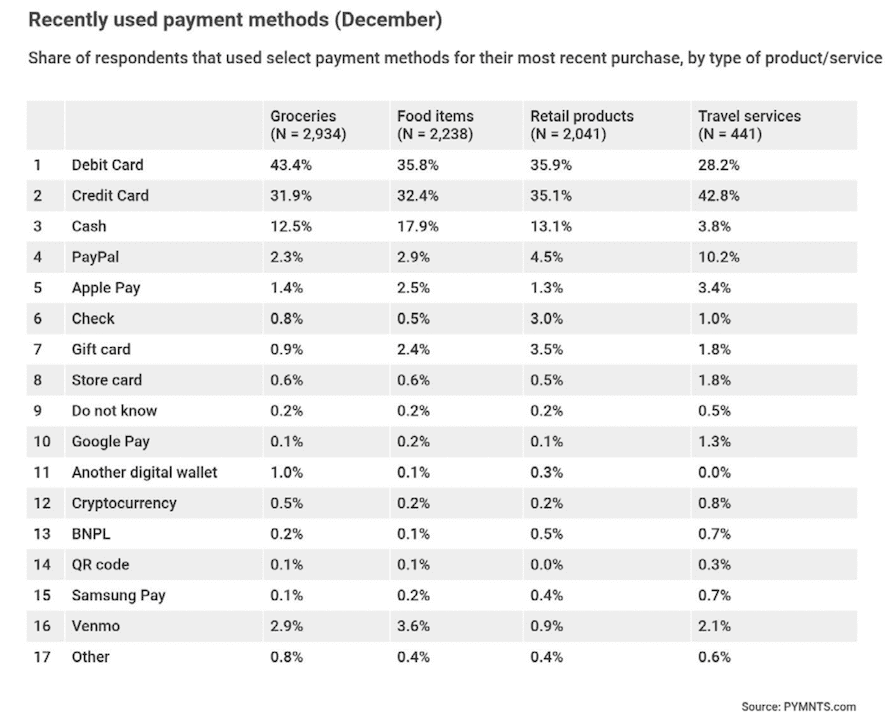Study Reveals Grocers Lag Behind Restaurants in Driving Digital Payment Adoption

Grocers are increasingly challenged to compete with other food-selling categories, with consumers eating more of their restaurant meals at home than ever before. If grocers cannot provide the same frictionless experience as their restaurant counterparts, they risk falling behind.
As digital wallets catch on as a way to pay for prepared food orders, grocers are not seeing the same uptick in use, according to data from the January edition of PYMNTS’ study Digital Economy Payments: How U.S. Shoppers Paid During The Holiday Season, which surveyed a census-balanced panel of more than 3,000 United States adults about their purchases over the previous month.
Get the report: Digital Economy Payments
The study found that, last month, restaurant customers were twice as likely as grocery shoppers to pay for their purchases using Google Pay or Samsung Pay, and they were 79% more likely to use Apple Pay. Consumers were also significantly more likely to use digital payment options such as PayPal or Venmo at restaurants than at grocery stores.

Digital payments are key to reaching not just a handful of young early adopters but also consumers across the board.
“COVID brought in some online ordering from demographics, particularly some of the boomers who in the past have not been as oriented around online shopping, particularly for groceries,” Debbie Guerra, executive vice president of on-demand merchant solutions at ACI Worldwide, told PYMNTS in an interview. “We’ve seen, with the millennials, the Gen-Zers, that they were already eager to continue to adopt digital payments. What has happened, though, is that as COVID continued, the ongoing shift to digital has become embedded.”
Read more: Supermarkets Rethink Physical and Digital Aisles for Grocery’s Connected Future
Leading grocers may be investing significantly in their digital offerings, but the category as a whole continues to be outpaced by other industries in reaching today’s connected consumers. The study found that grocery products represented the most common purchases in physical stores in December, as 87% of consumers bought them in the traditional manner.
This might not be an issue if brick-and-mortar customers spent the same amount as their digital and omnichannel counterparts, but leading grocers have noted that this is not the case. For instance, Albertsons Companies, one of the leading grocery retailers in the U.S., which operates a range of popular chains including its self-titled brands, Safeway, Vons, Jewel-Osco and Shaw’s, shared Tuesday (Jan. 11) that its customers who shop digitally and in stores spend dramatically more than those who stick to the latter.
“As omnichannel households spend three times more than in-store only shoppers, we continue to increase our investments in digital, omnichannel and loyalty, which drove increased identified households and higher customer engagement and retention,” Albertsons CEO Vivek Sankaran told analysts on an earnings call.
See more: Albertsons’ Mobile Updates See Sales Continue to Trend Upward
To reach these omnichannel consumers, grocers will need to provide (and drive adoption of) the quick, intuitive payment options that consumers are growing to expect.
